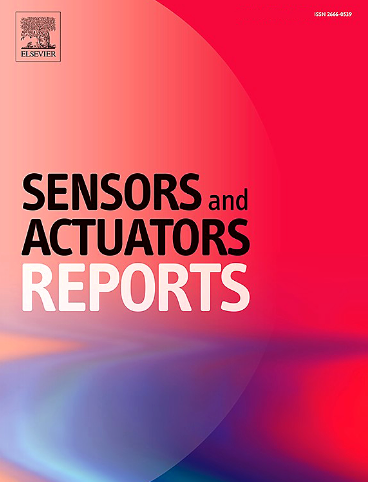Cascading chemiresistive paper-based enzymatic biosensor for urea detection
IF 7.6
Q1 BIOTECHNOLOGY & APPLIED MICROBIOLOGY
引用次数: 0
Abstract
The conventional approach for diagnosing high risk metabolic disorders, such as chronic kidney disease (CKD), involves drawing a blood sample, which necessitates access to a centralized facility, making it undesirable for frequent urea monitoring. Alternative biological fluids, such as saliva, have demonstrated potential as non-invasive mediums for CKD monitoring due to the strong correlation between blood urea and salivary urea levels, indicating their suitability for point-of-care test kits. In this study, we present an innovative chemiresistive paper-based enzymatic sensor that utilizes a combination of urease and polystyrene sulfonate (PSS) to measure urea. This sensor detects urea over a broad concentration range (10–110 mg/dl), encompassing the salivary urea levels found in both healthy (20±10 mg/dl) and diseased (100±10 mg/dl) individuals. Furthermore, the sensor’s response to urea remains unaffected by the presence of interfering molecules in saliva such as metabolites, proteins, sugars and acids. The stability and response time of the sensor were also assessed under various temperatures, as encountered during storage. Overall, the sensor developed in this study offers a promising solution for creating a rapid, scalable, cost-effective, and user-friendly point-of-care monitoring test kit for urea screening in resource-limited setting with restricted access to healthcare facilities.

用于尿素检测的级联化学纸酶生物传感器
诊断高风险代谢性疾病(如慢性肾脏疾病(CKD))的传统方法包括抽取血液样本,这需要进入集中设施,因此不需要频繁监测尿素。由于血液尿素和唾液尿素水平之间存在很强的相关性,替代的生物液体,如唾液,已被证明有潜力作为CKD监测的非侵入性介质,这表明它们适合于即时检测试剂盒。在这项研究中,我们提出了一种创新的化学抗性纸基酶传感器,它利用脲酶和聚苯乙烯磺酸盐(PSS)的组合来测量尿素。该传感器检测尿素的浓度范围很广(10 - 110 mg/dl),包括在健康(20±10 mg/dl)和患病(100±10 mg/dl)个体中发现的唾液尿素水平。此外,传感器对尿素的反应不受唾液中代谢物、蛋白质、糖和酸等干扰分子的影响。在存储过程中遇到的不同温度下,还评估了传感器的稳定性和响应时间。总的来说,本研究中开发的传感器提供了一个有前途的解决方案,用于创建一个快速、可扩展、具有成本效益和用户友好的护理点监测测试试剂盒,用于在资源有限的环境中进行尿素筛查,医疗机构的访问受限。
本文章由计算机程序翻译,如有差异,请以英文原文为准。
求助全文
约1分钟内获得全文
求助全文
来源期刊

Sensors and Actuators Reports
Multiple-
CiteScore
9.60
自引率
0.00%
发文量
60
审稿时长
49 days
期刊介绍:
Sensors and Actuators Reports is a peer-reviewed open access journal launched out from the Sensors and Actuators journal family. Sensors and Actuators Reports is dedicated to publishing new and original works in the field of all type of sensors and actuators, including bio-, chemical-, physical-, and nano- sensors and actuators, which demonstrates significant progress beyond the current state of the art. The journal regularly publishes original research papers, reviews, and short communications.
For research papers and short communications, the journal aims to publish the new and original work supported by experimental results and as such purely theoretical works are not accepted.
 求助内容:
求助内容: 应助结果提醒方式:
应助结果提醒方式:


